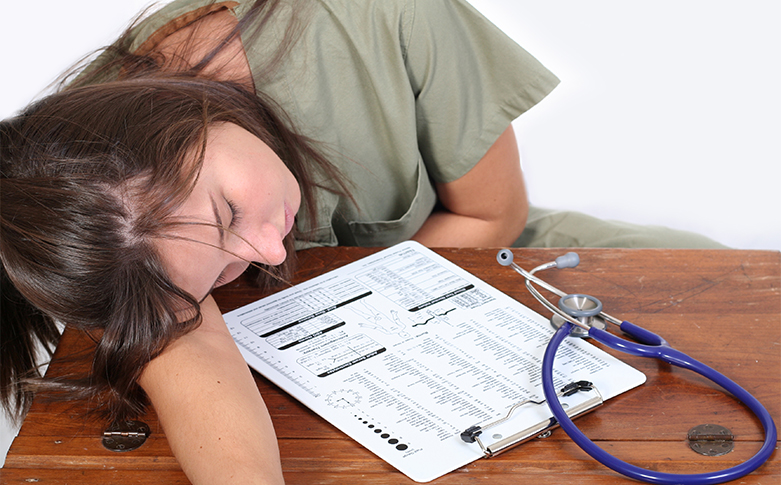Yes, but at the same time, No, REM can only be avoided, not fully cured as it happens very rarely.
REM sleep behavior disorder is distinguished by abrupt physical movements and intonations while experiencing weird hallucinations during REM sleep. It is a form of psychiatric illness that describes irregular behaviors while sleeping.
During regular REM sleep, the person undergoes partial muscle paralysis, known as atonia, while the brain exhibits wakefulness-like behavior. The blood pressure increases, the breathing becomes erratic, and the eyes dart in all directions simultaneously (hence, the term “rapid eye movement”).
REM sleep’s temporary paralysis helps us to dream safely while lying still while the brain is working. This paralysis affects most skeletal muscles but excludes muscles that help us breathe, digest, and some eye muscles. REM sleep accounts for about 25% of a whole night’s sleep, with most of it occurring in the second half of the night.
Persons with REM sleep behavior disorder do not experience natural muscle paralysis, allowing them to act out their dreams physically.
Tiny muscle twitches and quiet sleep can be symptoms of REM sleep conduct disorder, as can talk too loudly, scream, hit, kick, drag their bed companion, and jump out of bed.
Surprisingly, the hallucinations associated with REM sleep behavior disorder are often vivid and terrifying. People may have nightmares of being pursued or kidnapped, and they may unknowingly carry out their nightmares in real life.
If you want REM to be cured just proceed with the following link
https://www.newphaseblends.com/product/hemp-oil-for-sleep-2000mg-cbd-melatonin/
REM sleep is characterized by the temporary paralysis of most of the body’s muscles while the brain is active and dreaming. It enables us to sleep peacefully and comfortably all night.
It usually starts after 50 years of age and is associated with other neurological diseases such as the disease of Parkinson’s, Lewy’s body dementia, and multiple system atrophy. Frequently, with time, the symptoms worsen. The situation typically involves medication because it increases individuals and their bedtime partner’s risk of harm.
Table of Contents
Symptoms:-
Among its signs are:
- Movements of the limbs that are minor
- Punching, kicking, sitting up in bed, or getting out of bed are instances of more prominent physical movements.
- Speaking, crying, or shouting are examples of vocalizations.
Individuals probably don’t know these habits during events, and sometimes people don’t realize they have REM sleep behavior disorder until a bed partner or roommate informs them.
When someone is having an attack, they can generally be quickly awakened. When they awake, they are generally conscious, articulate, and can remember the contents of their dreams.
REM sleep begins approximately 90 minutes after you lie in bed, and REM sleep stages lengthen in the second half of the night. As a result, episodes of REM sleep behavior disorder often occur later in a sleep cycle. In the night, episodes may occur once or more.
Sometimes every year or every night, people may experience it. REM sleep behavior can develop suddenly or gradually, but typically with time, symptoms get worse
Causes:-
The cause of REM sleep disorder is unknown to scientists. According to animal research, it is related to unique neural pathways in the brain. Relevant neural pathways suppress muscle activity during REM sleep in people who do not have RBD, and disruption of these neural pathways results in REM sleep without atonia.
Other neurological disorders such as Parkinson’s disease, Lewy body dementia, multiple system atrophy, narcolepsy, or stroke often coexist with REM sleep behavior disorder. In some instances, REM sleep behavior disorder occurs before either of these neurodegenerative diseases develops.
According to one report, 38% of men aged 50 and up with REM sleep behavior disorder subsequently developed Parkinson’s disease, Lewy body dementia, or multiple symptom atrophy, typically within 13 years. In a 16-year follow-up analysis, the figure increased to nearly 81 percent.
Subsequent studies supported these observations; 30% of people with REM sleep disorder established a Parkinson’s disease or dementia during three years, and 66% did within 7.5 years.
Treatment:-
Treatment for REM disorder is personalized to the person and can include a mixture of lifestyle changes, medications, and harm avoidance techniques.
-
Avoid Triggers:
Since some alcohol and prescription medications may lead to REM sleep behavior disorder, making behavioral changes to minimize or prevent their use can be part of a person’s care.
These modifications may be part of a broader collection of measures to enhance sleep hygiene, such as establishing a regular sleep schedule that normalizes sleep and encourages sleep quality.
-
Medication:
Melatonin will be the first treatment for REM sleep behavior disorder. It usually has more minor side effects than other prescription choices while providing comparable efficacy.
It is also a better choice for the elderly, those who have dementia, those at risk of falling, and those suffering from sleep apnea. The dosage of melatonin required for REM sleep activity differs from that required to fall asleep and consult a physician.
Clonazepam, a prescription drug, effectively relieves pain in 50-80% of people with REM sleep disorder. That being said, it can trigger sleepiness, clumsiness, and balance problems in the morning. It may also lead to or exacerbate sleep apnea.
Before actually taking any prescription or over-the-counter drug, please check with your doctor. They will better advise you on a care plan centered on your clinical background and signs.
-
Injury Prevention:
One of the essential things a person with REM behavior sleep disorder can do is create a healthy sleep environment. Sleep-related injuries, such as bruises, cuts, fractures, blunt trauma, and head trauma, have been recorded in 30 to 81 percent of the patients. Furthermore, when lying next to someone who unknowingly carries out violent visions, the bed partner is at risk of injury.
Appropriate preventive guidelines may include the following:
- Taking away any sharp objects or guns from the room
- Putting down pads around the bed on the ground
- Putting up reinforced ratchet straps on the bed’s side
- laying down the mattress on the surface
- Remove all accessories and junk from the vicinity of the room.
- In the bedroom, cover all the furniture’s edges
- Window protection in the bedroom
If the person shares a bed with a sleep partner, they often sleep in different bedrooms or rooms until the signs are well controlled.




/the-benefits-of-digestive-enzymes-89446-primary-d6640289890f45c6ac1392750cf16a32.jpg)
